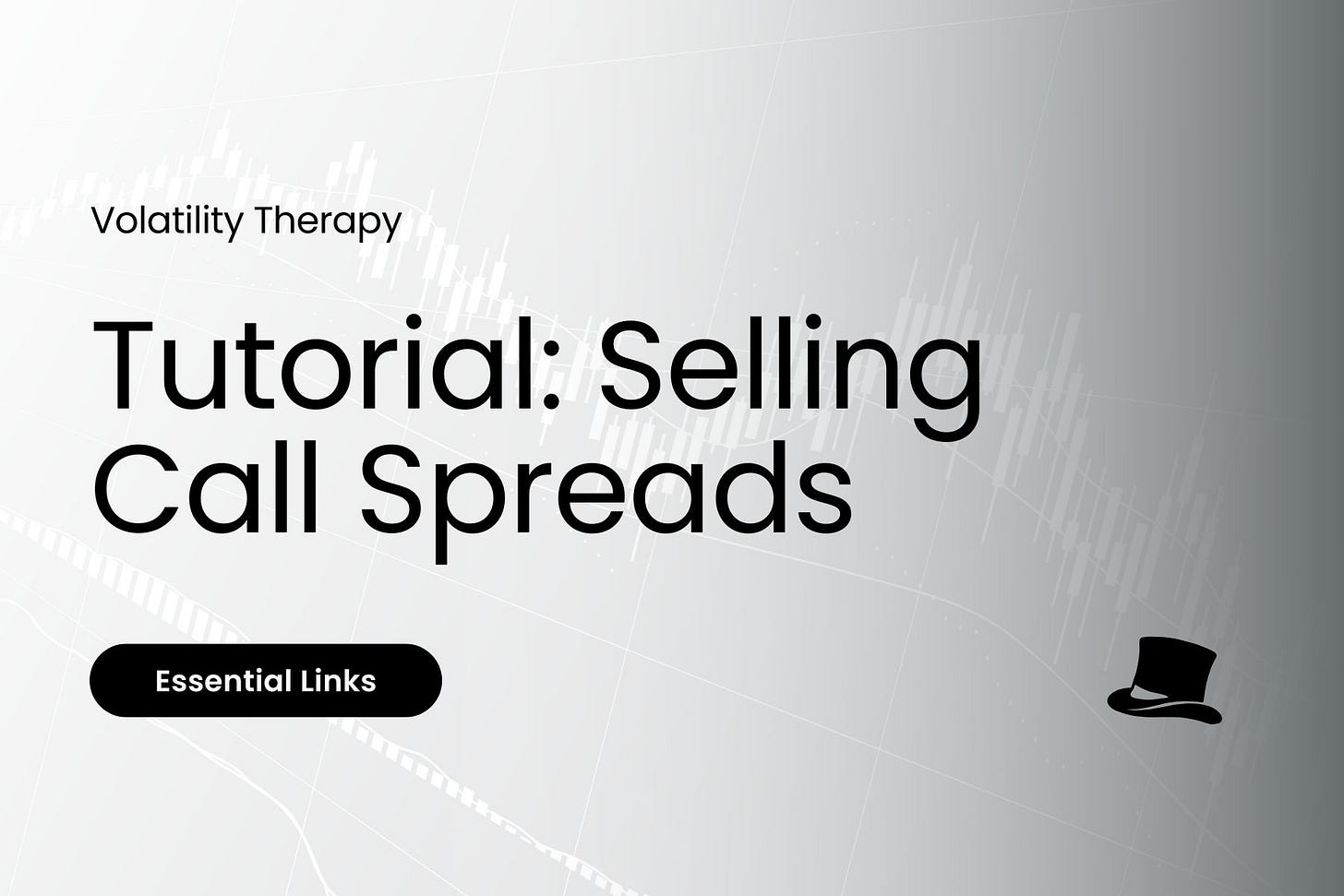Essential Links
We wrote the Weekly ES/SPX Call Spreads in the chat room this week — and it dawned on me: many may not actually know what this is.
Totally fair. It sounds more complicated than it really is.
So here’s a quick and simple walkthrough — because once you get it, it’s a powerful tool to add to your trading arsenal.
Quick Guide: Selling Call Spreads on Indexes (e.g. SPX, NDX, etc)
What It Is:
A bearish-to-neutral options strategy where you sell one call and buy another at a higher strike (same expiration date). The buying of the higher strike is to limit your risk…very important…Why Do It:
You believe the index will stay below your short strike by expiration — and you collect a credit upfront.How It Works:
Sell 1 call (e.g. SPX 5960)
Buy 1 call higher (e.g. SPX 6000)
Receive a net credit (max profit)…$20 as the credit per contract example in this.
Max Profit:
The credit you collected: $20 per contract
If SPX closes below 5960, the spread expires worthless — and you keep the full credit
Max Loss:
Width of spread (6000–5960 = $40) minus credit received ($20) = $20 loss max
So if SPX closes above 6000, you lose $20 per contract.
Even if SPX runs to 6050 or 6100 or 6200 — you still only lose that pre-defined $20.
Risk Defined:
This is not a naked call — your loss is capped and known up front. Great for risk-managed bearish or sideways views.Edge Comes From:
Elevated implied volatility = inflated option premiums
Time decay working in your favor
Index hitting resistance, our proprietary volatility bands, or showing signs of momentum exhaustion
Used When:
Market feels tired, overextended, or bumping up against volatility bands / fib zones / resistance.
Exactly like this week!
A great pre-calculated risk to reward strategy to put in your arsenal….
Here’s a Visual to hopefully help the visually inclined…I know I learn that way!
Legal Disclaimer
The content shared in this post is for informational and educational purposes only and does not constitute financial, investment, legal, or tax advice. Nothing here should be considered a recommendation to buy or sell any financial instrument. All opinions are the author’s own and may change over time. Past performance is not indicative of future results. Please do your own research and consult with a licensed professional before making any financial decisions.






Great tutorial. You are good at explaining stuff.
At Charles Schwab, this seems to be one of two types of what they call "Vertical Calls". It's so great to know what this is finally....and to see that I've had permission at Schwab to do this already for quite some time. So, I am good to go!